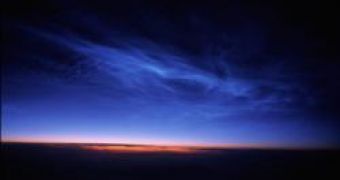A new NASA mission planned for, with an assist from Utah State University, will send a satellite into orbit to study what are known as noctilucent clouds (night shining, in Latin), which appear to glow at night.
Forming at the edge of space, they appear to be getting brighter and more frequent, raising questions as to their possible link to global warming.
Noctilucent clouds were first observed in 1885, two years after the Krakatoa eruption. But most volcanic eruptions do not spew material high enough in the atmosphere to seed the formation of the icy clouds
Normally, the clouds are only seen at high latitudes, but in recent years, the evening clouds have been spotted as far south as Utah.
"We don't know why this is happening," said Vicki Elsbernd, NASA program executive for the Aeronomy of Ice in the Mesosphere (AIM) mission.
The first possible launch date is April 25 from Vandenberg Air Force Base in California, she said during a telephone press conference.
USU's Space Dynamics Lab created one of the three instruments that will be used to study the ultra-high-altitude clouds. The lab's SOFIE, or Solar Occulation for Ice Experiment, will gather information on the particles in the clouds and the chemistry involved in forming the clouds, said Jim Russell, the principal investigator from Hampton University in Virginia.
Russell said while astronauts on the Space Shuttle and equipment on other satellites have spotted the clouds, no orbiting devices are equipped to probe these clouds. "We are exploring clouds literally at the edge of space," Russell said.
Noctilucent clouds need cold temperatures, water vapor and small particles to form. It is believed that greenhouse gases, such as carbon dioxide, at high altitudes block incoming radiation from the sun. These gases may be lowering the temperatures at high altitudes, meaning humans may be inadvertently causing more of these clouds to form.

 14 DAY TRIAL //
14 DAY TRIAL //